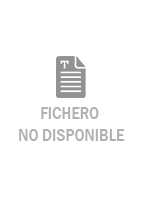Please use this identifier to cite or link to this item:
https://hdl.handle.net/11000/36892Full metadata record
| DC Field | Value | Language |
|---|---|---|
| dc.contributor.author | Murcia, M. | - |
| dc.contributor.author | Rebagliato, M. | - |
| dc.contributor.author | Espada, M. | - |
| dc.contributor.author | Vioque, J. | - |
| dc.contributor.author | Santa Marina, L. | - |
| dc.contributor.author | Alvarez-Pedrerol, M. | - |
| dc.contributor.author | Lopez-Espinosa, M.J. | - |
| dc.contributor.author | León, G. | - |
| dc.contributor.author | Iñiguez, C. | - |
| dc.contributor.author | Basterrechea, M. | - |
| dc.contributor.author | Guxens, M. | - |
| dc.contributor.author | Lertxundi | - |
| dc.contributor.author | Perales, A. | - |
| dc.contributor.author | Sunyer, J. | - |
| dc.contributor.other | Departamentos de la UMH::Farmacología, Pediatría y Química Orgánica | es_ES |
| dc.date.accessioned | 2025-07-21T10:01:58Z | - |
| dc.date.available | 2025-07-21T10:01:58Z | - |
| dc.date.created | 2009 | - |
| dc.identifier.citation | Journal of Epidemiology and Community Health. BMJ Publishing Group. 64-12, pp.1094-1099 | es_ES |
| dc.identifier.issn | 0143-005X | - |
| dc.identifier.uri | https://hdl.handle.net/11000/36892 | - |
| dc.description.abstract | Background Monitoring iodine status during pregnancy is essential to prevent iodine-related disorders. The objectives of this study are to estimate iodine intake and excretion, to assess their association and to evaluate the compliance of the recommendations in a multicentre cohort of pregnant women. Methods Cross-sectional data on maternal iodine nutritional status, compiled between weeks 8 and 22 of gestation in three Spanish areas (Valencia, Gipuzkoa and Sabadell), were analysed. Information on iodine intake from diet, salt and supplements was estimated through questionnaires. Spot urine samples were analysed for urinary iodine concentration (UIC). Tobit regression analysis was used to assess the association between iodine intake and UIC. Results 1522 women were included in the study. Median UIC was 134 (IQR 80e218) mg/l in Valencia, 168 (IQR 108e272) mg/l in Gipuzkoa and 94 (IQR 57e151) mg/l in Sabadell. 48.9% of Valencian women consumed iodine supplements, 93.3% in Gipuzkoa and 11.0% in Sabadell. Prevalence of iodised salt consumption was 50.5% in the whole sample. UIC was associated with intake of supplements, iodised salt, dietary iodine and water. UIC levels were lower than expected according to the estimated iodine intake. Conclusion Median UIC reflected iodine deficiency according to WHO reference levels, except in Gipuzkoa where supplements are widely consumed. It is necessary to strengthen iodised salt consumption since it is already far from the objective proposed of coverage of 90% of households. More data would be valuable to assess the correspondence between iodine intake and excretion during pregnancy. | es_ES |
| dc.format | application/pdf | es_ES |
| dc.format.extent | 6 | es_ES |
| dc.language.iso | eng | es_ES |
| dc.publisher | BMJ Publishing Group | es_ES |
| dc.rights | info:eu-repo/semantics/restrictedAccess | es_ES |
| dc.rights | Attribution-NonCommercial-NoDerivatives 4.0 Internacional | * |
| dc.rights.uri | http://creativecommons.org/licenses/by-nc-nd/4.0/ | * |
| dc.subject.other | CDU::6 - Ciencias aplicadas::61 - Medicina::615 - Farmacología. Terapéutica. Toxicología. Radiología | es_ES |
| dc.title | Iodine intake in a population of pregnant women: INMA mother and child cohort study, Spain | es_ES |
| dc.type | info:eu-repo/semantics/article | es_ES |
| dc.relation.publisherversion | 10.1136/jech.2009.092593 | es_ES |
 View/Open:
View/Open:Murcia_2010_iodine_intake_pdf.pdf
135,12 kB
Adobe PDF
Share:
.png)
